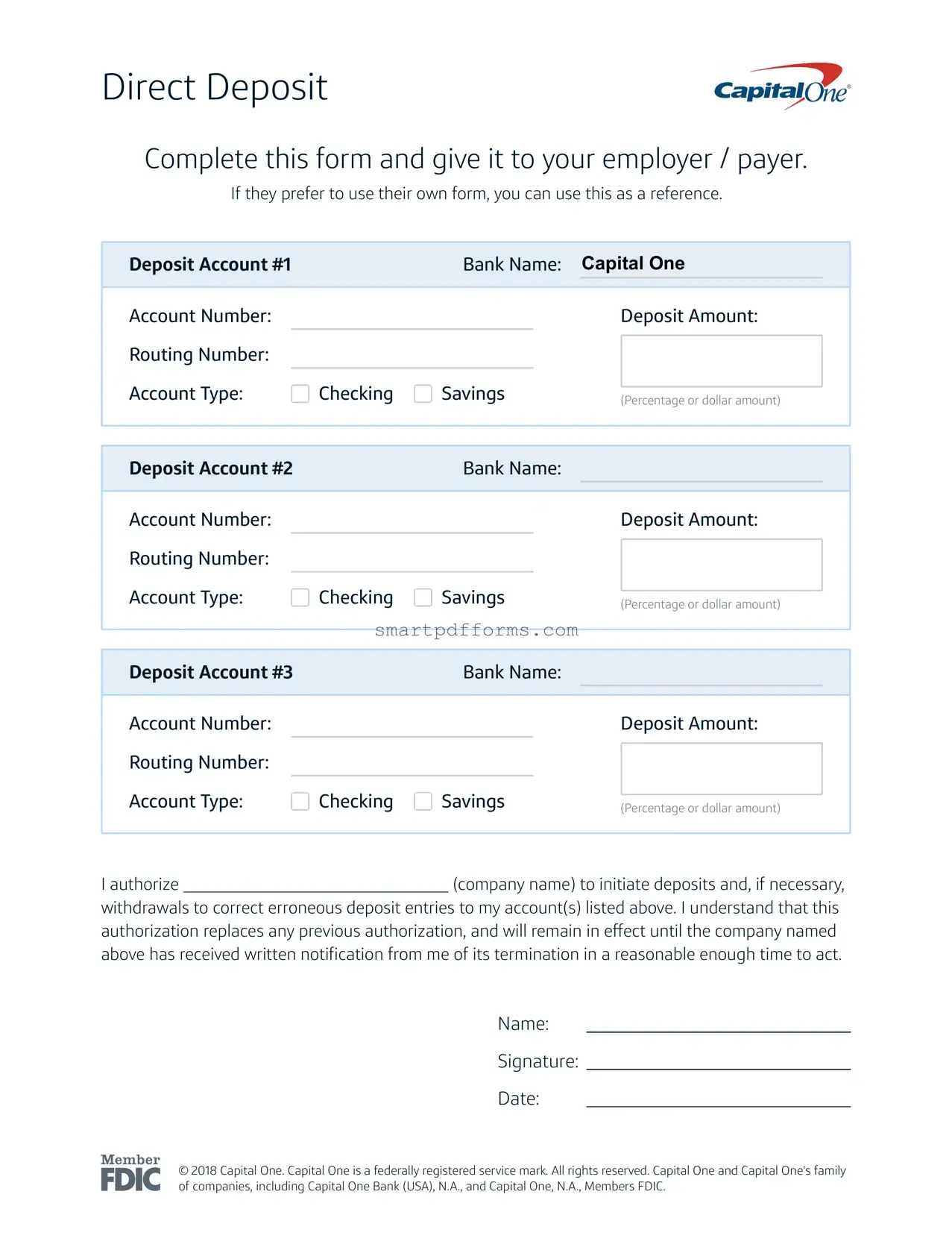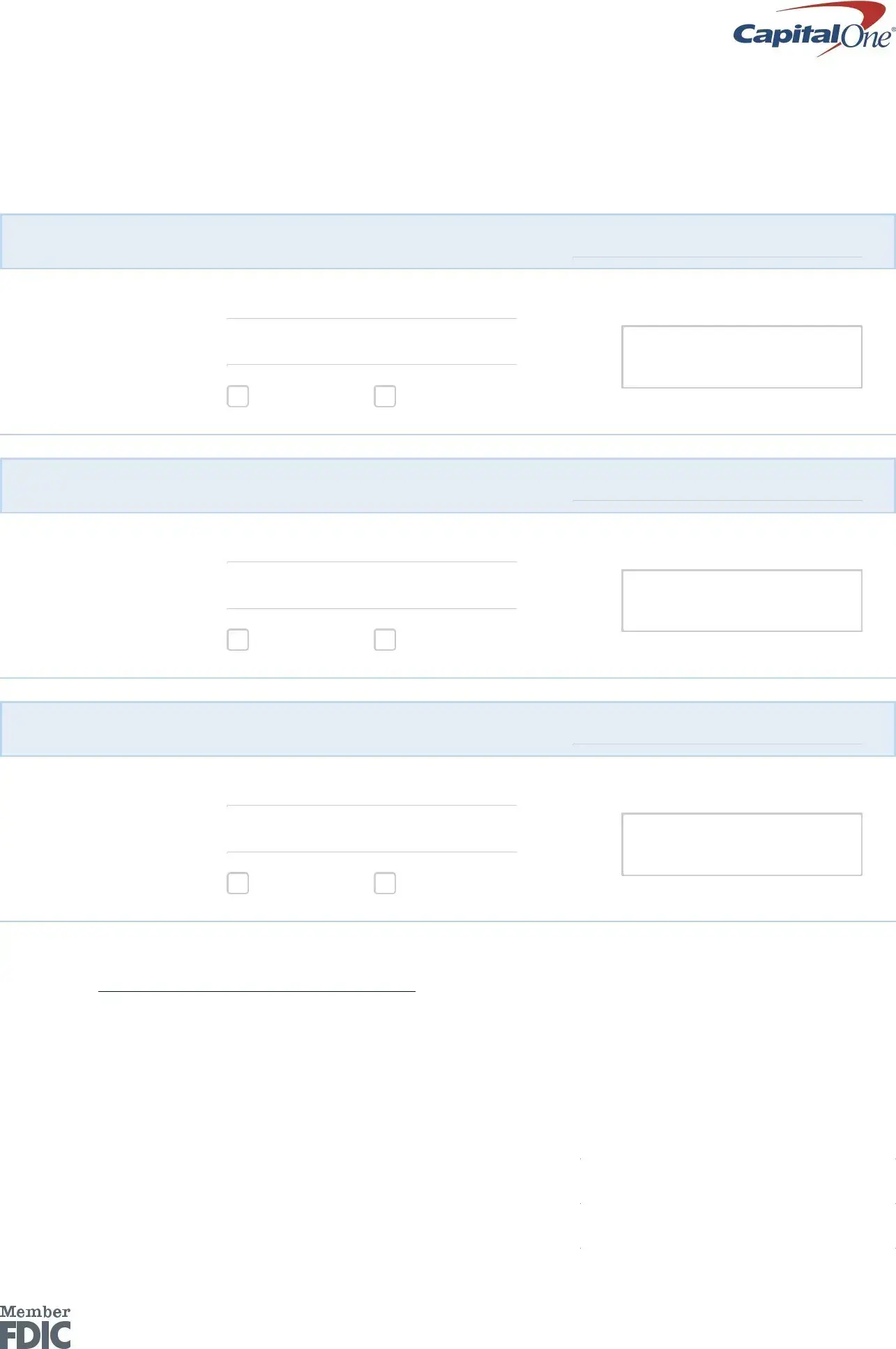-
What is the purpose of the Capital One Direct Deposit form?
This form is used to instruct your employer or payer to initiate direct deposits to your Capital One account(s). It allows for the deposits of your paycheck or other payments directly into your Capital One checking or savings account(s), ensuring a faster and more secure transfer of funds.
-
Can I divide my deposit between different accounts?
Yes, the form provides the option to split your direct deposit between up to three Capital One accounts. For each account, you can specify the deposit amount either as a percentage or a dollar amount, allowing for flexible management of your money.
-
What information is required to complete the form?
You will need the Bank Name (Capital One for all entries), your Account Number(s), the specific Deposit Amount(s) (specified as either a percentage or a dollar amount), the Routing Number for each Capital One account, and the Account Type (checking or savings). Additionally, you’re required to authorize the transaction by providing the company name, your name, signature, and the date.
-
Where do I find my Capital One routing and account numbers?
Your routing number is a nine-digit code that identifies the financial institution associated with your account. For Capital One accounts, this information can typically be found online within your account details, on your account statements, or at the bottom of your checks. Your account number is also available in these locations and is unique to your personal account.
-
Can I use the form if my employer has their own direct deposit form?
Yes, if your employer prefers to use their proprietary form for direct deposit setup, you can still reference the information provided in the Capital One Direct Deposit form. Ensure that the necessary account details and authorization are accurately transferred to your employer's form.
-
How do I submit the completed Capital One Direct Deposit form to my employer?
Once you complete the form, you can submit it to your employer’s payroll or human resources department, according to their preferred procedure. Some employers may require a hard copy, while others might accept an electronic submission.
-
Is it secure to provide this information for direct deposit?
Yes, setting up direct deposit is a secure process. However, it's essential to submit your completed form through secure means (like encrypted email or a secure upload portal, if submitting electronically), or directly to a trusted payroll or HR representative if submitting a hard copy, to protect your personal information.
-
Can I change my direct deposit settings after submitting the form?
Yes, you can update your direct deposit instructions at any time. To do so, complete a new direct deposit form with your updated information and submit it to your employer. Make sure to notify them that this new form replaces any previous authorization.
-
How long does it take for direct deposits to start arriving in my account?
The timeline for activating direct deposits can vary by employer. Typically, it may take one or two payroll cycles for your direct deposit to become effective, as employers often need to process and verify your setup. It's wise to maintain alternate arrangements until you confirm that direct deposits are successfully reaching your Capital One accounts.
-
What happens if there's an error with my direct deposit?
The form includes authorization for the company to initiate withdrawals for the purpose of correcting erroneous direct deposit entries to your account(s). If you notice a mistake with your deposit, you should also directly contact your employer’s payroll or HR department to rectify the issue promptly.

